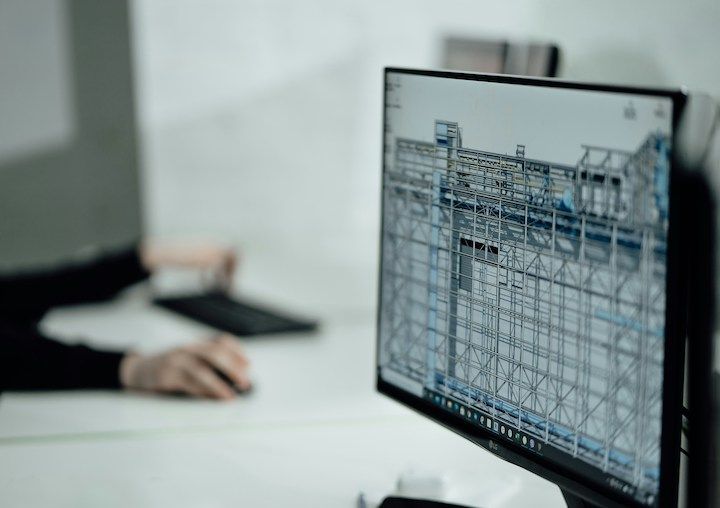INSTANT ON NOW AVAILABLE - Experience Time to first frame as quick as 2 SECONDS
Six Trends Powering CAD Application and Collaboration

Over the past six decades, Computer-Aided Design (CAD) has transformed the design landscape, enhancing efficiency, precision, and version control. What began as a tool primarily for individual design work has evolved into a cornerstone of collaborative efforts across industries. As collaboration norms shift and technological advancements propel us forward, the role of CAD continues to expand, offering new opportunities for designers and businesses alike.
Traditional CAD tools facilitated collaboration by allowing designers to share digital drafts, replacing cumbersome physical sketches. However, the definition of effective collaboration has evolved significantly. In today's landscape, characterized by remote work and real-time collaboration, expectations are higher than ever. To meet these evolving needs, CAD is adapting in several key ways, driving collaboration across different verticals and unlocking new value propositions.
Here's how CAD is shaping the future of collaboration across various industries:
1. BIM Integration in Construction
Building Information Modeling (BIM) has truly revolutionized collaboration in the construction industry. Unlike traditional CAD, which primarily focuses on graphical representation, BIM incorporates rich data sets, enabling multidimensional models that encompass time, cost, sustainability factors, and more. This holistic approach streamlines communication and decision-making throughout the project lifecycle, which is why BIM continues to be rapidly adopted in construction.
Notably, in a time of increasing regulatory requirements for energy efficiency and the overall environmental impact of buildings, BIM offers the industry a major advantage. In Ireland, Varming Consulting Engineers and stakeholders leveraged BIM at the planning stage to assess the environmental impact of Three Park Place, a 7-story office in Dublin. This included “a detailed analysis of solar gains to optimize glazing ratios and ensure façade compliance, modeling of all the mechanical and electrical services to achieve the target BER and confirmation that the LEED credits for daylighting, ventilation, indoor air quality and thermal comfort were achieved.”
As companies like Autodesk continue to integrate advanced BIM functionalities into their software offerings, collaborative efforts within the construction sector are becoming more seamless and efficient. This is reflected in the growth of the BIM market, from 6.85 billion (USD) in 2022 to an expected 17.32 billion (USD) by 2030.
2. Enhanced Collaboration
The rise of real-time 3D technologies, including powerful game engines like Unity and innovative solutions such as Bentley Systems, is presenting exciting opportunities for industries seeking to streamline collaboration. These solutions allow stakeholders in real estate, architecture, engineering, and construction to visualize designs and share feedback instantly, regardless of geographical location. By leveraging the power of real-time 3D streaming, teams can accelerate decision-making processes and ensure alignment across all project stakeholders. This approach was critical to how construction company Skanska redeveloped New York City’s LaGuardia airport.
Ultimately, this innovative technology augments CAD capabilities, facilitating seamless integration and collaboration within and across industries.
3. Mass Customization Across Industries
Mass customization is emerging as a key strategy for industries aiming to deliver unique products at scale, like the ‘Nike By You’ customizable shoe program. Unlike traditional mass production methods, which prioritize standardization, mass customization relies on CAD-driven flexibility to meet individual customer needs. Realizing the full potential of mass customization demands efficient collaboration tools that enable seamless communication and iteration. The east gate of the Nanjing Happy Valley Theme Park is a remarkable example of what’s possible here.
Ultimately, CAD platforms equipped with robust collaboration features will play a pivotal role in bridging the gap between customer preferences and manufacturing capabilities, driving innovation across diverse sectors. For example, the contract engineering and product development firm Guinn Partners used Autodesk Fusion 360’s digital collaboration tools to launch over 50 projects, including for the toy company Gel Blaster, which hit $75 million USD in sales by its third year.
4. AI-Driven Design Optimization
Artificial intelligence (AI) is poised to revolutionize the CAD landscape by automating design optimization processes. Instead of relying on manual reviews and iterative adjustments, AI-powered CAD solutions can analyze designs in real time, synthesizing feedback and implementing optimizations seamlessly. This not only accelerates the design process but also enhances collaboration by facilitating quicker decision-making and iteration cycles.
Practically speaking, this could mean users will be able to communicate with CAD software through voice commands or text comments. The AI can then quickly analyze and execute the necessary adjustments, which streamlines overall communication, especially in a design review process.
As AI continues to advance, CAD tools will become indispensable assets for businesses seeking to leverage cutting-edge technology for design optimization and innovation.
5. Cloud-Based Collaboration
The shift towards cloud-based collaboration is transforming CAD workflows, enabling designers to work seamlessly across geographical boundaries and time zones. Cloud-based CAD solutions offer unparalleled flexibility, allowing teams to access and collaborate on projects from anywhere, at any time. By eliminating the constraints of dedicated workstations and file size limitations, cloud-based CAD platforms empower designers to embrace remote work and international collaboration fully. Because of all of this, OnShape’s 2023-2024 State of Product Development & Hardware Design Survey found that the number of mainstream users tapping newer cloud-based CAD products almost doubled from 15.9% in 2022 to 28.3% in 2023. This paradigm shift heralds a new era of collaborative design, characterized by flexibility, efficiency, and accessibility – and those numbers will only grow.
As CAD continues to evolve, it remains the foundation for design in an increasingly interconnected world. Whether facilitating collaboration in construction projects, enabling real-time 3D streaming for visualization and feedback, or driving innovation through mass customization, CAD tools are essential for businesses seeking to thrive in the digital age. By embracing emerging trends and leveraging cutting-edge technologies such as PureWeb Reality's real-time 3D streaming platform for distrubution, companies can unlock the full potential of CAD-driven collaboration, paving the way for transformative advancements and unprecedented creativity.